Korea Sports Association for the Disabled have a responsibility for sports promotion of the disabled. After the launch of the organization 10 years have passed and now there ara a lot of achievement and challenges. By applying the system theory there ware derived many performance and ahallenge. First, in terms of system boundaries the organization requires an understanding of several related businesses within government departments and sports organizations to promote cooperation between business needs to enhance the professionalism. Second, in terms of the production system the organization requires specialization of the purpose, division of labor according to the principles of the process of professionalization, specialization according to the needs of beneficiaries, according to demographic characteristics. Third, in terms of keeping system the degree of formalization of business rules and procedures to enhance the selection, training, compensation of employees is necessary to improve the system and gather the information you need to perform tasks. Forth, in terms of adaptive systems research budget in view of the research need to be carried out as planned and secured by business efficiency and effectiveness, and to ensure accountability through evaluation utilizing external experts in departmental organizational diagnosis and assessment. Fifth, in terms of organization and management system there are necessary to affiliate effort to resolve the conflict between the hierarchical and reward trade-offs and goal setting and the use of resources allocation, substantiality of performance evaluation. Sixth, Five kinds of systems that require priority sector innovation efforts in the production system, management system, adaptive systems, maintenance systems, boundary systems in order.
PURPOSE This study aimed to analyze factors associated with physical activity (PA) in older adults based on social ecological theory. METHODS Secondary analysis was conducted using raw data from the 2021 Community Health Survey. after excluding 129 non-responses in the PA domain, a total of 74,363 individuals were included in the final analysis. A total of eight factors, including personal (level of depression, history of falls), relational (relationships with neighbors, living alone), community (satisfaction with the local community system, safety), and environmental factors (living environment, natural environment), were selected in accordance with the key points of social ecological theory. To analyze social ecological factors related to the PA of older adults, we conducted a decision tree analysis using Chi-square automatic interaction detection (CHAID). RESULTS The average PA level among older adults was approximately 136 minutes, but the mode and median were both 0 minutes. A total of 20.2% of older adults met the physical activity recommendations, while 79.8% did not. According to the first split of the decision tree, living alone was the most relevant factor associated with the PA of older adults, followed by depression and falls. Older adults living alone, with a depression score of 10 or higher, and who had experienced a fall within the past year, were least likely to meet the PA recommendations. CONCLUSIONS This study urgently suggests that PA programs should target older adults living alone, experiencing depression, and falls.
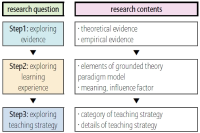
Purpose The purpose of this study was to understand learning experiences deeply and to prepare practical teaching strategies by reflecting the voices of the field. Methods For this, I used the logic and techniques of 'the grounded theory'. In particular, I used ‘the grounded theory paradigm model', which enables a holistic and systematic analysis of specific experiences to explore learning experiences and teaching strategies. I selected 10 male and female students who participated in art and physical activities as research participants. I collected data through literature review, in-depth interviews, and expert meetings, and analyzed using open coding, axial coding, and selective coding. Results First, I explored “the learning experience of art and physical activities in free-semester system", according to the elements of grounded theory paradigm model. It is composed of the ’causal condition’, ‘contextual condition’, ‘central phenomenon’, ‘interventional condition’, ‘interaction strategy’, and ‘results’. Second, based on this, I conducted "the teaching strategies for art and physical activities in free-semester system". These are composed of 'expansion strategy', 'diversity strategy', 'spontaneity strategy', and 'immersion strategy'. Conclusions The results of this study suggest that art and physical activities in free-semester system are leading to a positive change extended from the planned goals. In addition, various variables are structurally intertwined, and thus, it is considered that more strategic and systematic efforts are required in various dimensions for the successful application.

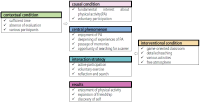
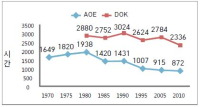
The aim of this study is to examine the directions of Physical Education Teacher Education (PETE) programs in Korea through the historical changes of each one PETE institute in England and Korea from the 1970s to 2010s based on academicisation. Document analysis and grounded theory were used to analyse historical sources and interviews. I identify four findings. First, the amounts of hours in curricula in both PETE courses have been reduced. Second, discipline knowledge in England was a first priority in the 1970s but has urgently reduced since the 1980s because of the growth and adoption of sport pedagogy. In Korea, discipline knowledge has still kept as a first priority for 40 years. However, professional knowledge in Korea has increased to enhance PETE since the middle of 2000s. Third, teaching experiences in England has increased by nearly double from 15 weeks to 32 weeks. In Korea, student have, and continue to participate in only four weeks of teaching experience. Fourth, education studies in England abolished in the 1990s. In Korea, they urgently increased in 2009. I conclude by confirming the need to study a structure and content of units of discipline knowledge and professional knowledge. I propose a system for selection of majors in the Department of Physical Education.

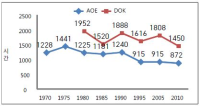
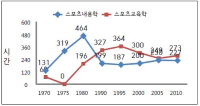
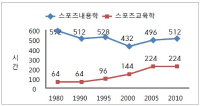
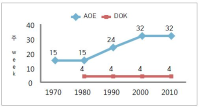
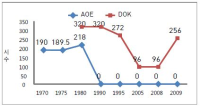
Purpose This study aims to explore migration factors of Korean male footballers who have moved from South Korea to Southeast Asian countries. Methods Qualitative case study was conducted with 9 footballers, 4 their agents and 2 K-league staffs as the participant. Results As a result, by regarding their migration as involuntary decision, this study could provide academic and practical discussion on sport labor migration. First of all, this study established theoretical framework for involuntary migration of the participants through ‘Push-Pull Theory’ which focuses on demand and supply on the labor force. Second, this study found that a local rule (FA compensation system) of Korean professional football league (K league) and hierarchical collectivist culture contributed to their migration, which has not been reported by previous studies focused on the voluntary migration of mainstream players and it reflected local context of K league. Conclusions In conclusion, this study confirmed that sport labor migration was also considered as social phenomenon and reflected a cross section of a particular society. Through the migration of athletes, we can provide a variety of viewpoint on economic (market) structure, related policy and system in a particular society, and understand migration motives in terms of agency (subculture).
This article aims to examine the research trend of sport history by analysing published research articles over the last decade in the Korean Journal of History for Physical Education, and suggest directions of research in sport history based on the results. We have reviewed a total of 264 articles relying on the analytic framework including the criteria of time period, method, nation, theme/topic, and purpose. The research findings are as follows. First, the post-Liberation period has been studied most often with 45.3%, followed by the Japanese Colonization period (20.2%), the Joseon Dynasty period (11.4%), the diachronic research (8.8%), the period from ancient times through Goryeo (8.1%), and the period of Enlightenment (6.2%). The results indicate that most recent studies in the journal unilaterally focus on the Modern and Contemporary history with 71.7%. According to the analysis result by research method, second, more than 90% of the studies have been conducted using qualitative methods while only 0.6% of the papers have adopted quantitative methods. The qualitative methods include textual analysis, participant observation, oral life story, and focus group interview. Textual analysis has been used most often with 74.5%. Oral life story has been second (22.5%), followed by participant observation (2.1%) and focus group interview (0.3%). The findings from this category show that it is still necessary to diversify research methods and vitalize interdisciplinary research. Third, in terms of nation, over 70% of the papers have studied about Korea, and European countries are the second most frequent region in the research trend (8.3%). The nation that follows is China with 6.4%. Although we analysed a Korean journal in sport history, the result exposes the lack of scholarly attention in the studies of sport history to world sport history reflecting comparative perspectives. By the criteria of theme/topic, fourth, genre has been studied most often with 31.7%, followed by figure (14.1%), facility/institution/organization (14.0%), system/policy/event (12.8%), philosophy/ideology/theory (6.7%), remains/relics/documentary material (6.3%), and domestic regions (5.4%). The results show that the recently published research articles have attempted to include a variety of genres in sports, play, and dance. While the topics for figure and facility/institution/organization also receive significant interest, it is limited that the studies mostly focus on male sport figures but female figures are barely explored. Even when female figures are researched, the attempts are observed only in the studies of dance. Fifth, the largest ratio of papers has had the research purpose of historical evolution (37.6%), followed by value/significance (20%), type/characteristic (15.5%), thoughts/ideology/theory (9.1%), origin (6.6%), suggestion/proposal/prediction (5%), comparison/correlation (5%), and concept/terminology (1.2%). The results expose that the studies tend to concentrate on historical evolution relying on chronological description while the research on concept/terminology is of little scholarly interest. Based on what we have found, it is identified that the recent studies in sport history have mostly focused on the historical evolution of a specific sport genre in the Korean Modern and Contemporary history using textual analysis. Consequently, the results suggest that researchers in sport studies need to put in additional effort to expand research topics and methods, and invite comparative perspectives involving inter/cross-national studies.